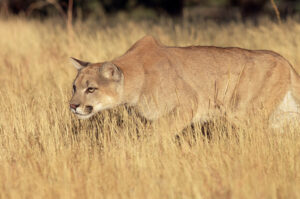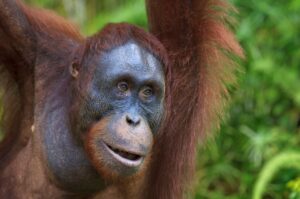A passion for the natural world drives many of our adventures. And when we’re not actually outside, we love delving into the discoveries about the places where we live and travel. Here are some of the best natural history links we’ve found this week.
Near-death experiences can scar animals for life: In the Canadian Yukon, scientists have studied a population cycle among snowshoe hares, lynx, and coyotes since the 1920s. As hare populations increase, so do the predators. When the number of hares crashes, the predators die off, then the hare population begins to rise again. Now, researchers have discovered that the falling number of hares is not just from predators. Chronic stress from repeated predator chases causes mothers to eat less food and have fewer babies. The chemical changes in the brain mirror those seen in traumatized humans. African elephants show similar behavior. Young elephants that have seen the matriarchs and older elephants get killed become more troublesome in adolescence. Again, this mirrors the behavior of some children who experience trauma.
Engineers discover the secrets of fish fins: Engineers have uncovered the secrets behind what makes fish fins so strong and flexible. Fins don’t contain any muscle; they are made of stiff rays. The fish twitches muscles at the base of the fin to move the structures. “Each of those rays can be manipulated individually just like your fingers, but there are 20 or 30 of them in each fin,” said Francois Barthelat, senior author of the study. Each ray blends hard material and softer collagen. This gives them the perfect balance between bouncy and stiff. These insights may have applications in new designs of robotic surgical tools and airplane wings.

Icebergs from the Greenland ice sheet. Photo: Shutterstock
Rain on the ice sheet
Rain falls on Greenland’s summit for first time in recorded history: Rain has fallen on the summit of Greenland’s ice sheet for the first time in recorded history. Over August 14-15, seven billion tons of water poured onto the ice sheet. At the same time, 872,000 km2 of ice melted. The amount of ice lost over one day was the same as the amount usually lost in a week. “What is going on is not simply a warm decade or two in a wandering climate pattern. This is unprecedented…We are crossing thresholds not seen in millennia,” said Ted Scambos, a scientist at the National Snow and Ice Data Center in Colorado.
Three volcanoes erupt at the same time in Alaska: In a rare event, three volcanoes on Alaska’s Aleutian Islands are erupting simultaneously. The three volcanoes — Pavlof, Great Sitkin, and Semisopochnoi — all sit on the Aleutian Arc, a chain of volcanoes on the boundary between two tectonic plates. Currently, none pose a threat to local communities and are all under a code Orange alert. This means they have the potential to erupt or eruptions are underway with minor ash emissions. Two further volcanoes in the chain are under a code Yellow, which means they are showing signs of unrest.

Two albino alligators hatch in Florida. Photo: Wild Florida via Facebook
Only 200 albino alligators in the world
Rare albino alligators hatch at Florida zoo: Two albino alligators hatched at a Florida zoo last week. Instead of having the species usual dark grey-green skin, the hatchlings are white and pink. They are two of roughly 200 albino alligators in the world. “We’re really excited, we’re taking good care of them,” says Andrew Biddle, alligator trainer at the zoo. The eggs are two of a clutch of 18 eggs that were laid earlier this summer. So far, they are the only two that have hatched.
Prehistoric ‘hobbit’ creature discovered: The remains of three new mammal species have been found in North America. Researchers believe that they roamed the area during the earliest Paleocene epoch, a few hundred thousand years after the extinction of dinosaurs. All three species belong to a new group called archaic ungulates. These placental mammals eventually led to hoofed mammals such as horses, cows, and elephants. One of the new discoveries, Beornus honeyi, resembles a house-cat-sized tiger. The name comes from The Hobbit character Beorn, which had “puffy” molars and could transform into a bear.

Artist’s impression of what the three species may have looked like. The one named after the hobbit crouches on the far right. Left to right: Conacodon hettingeri, Miniconus jeanninae, and Beornus honeyi. Image: Banana Art Studio





